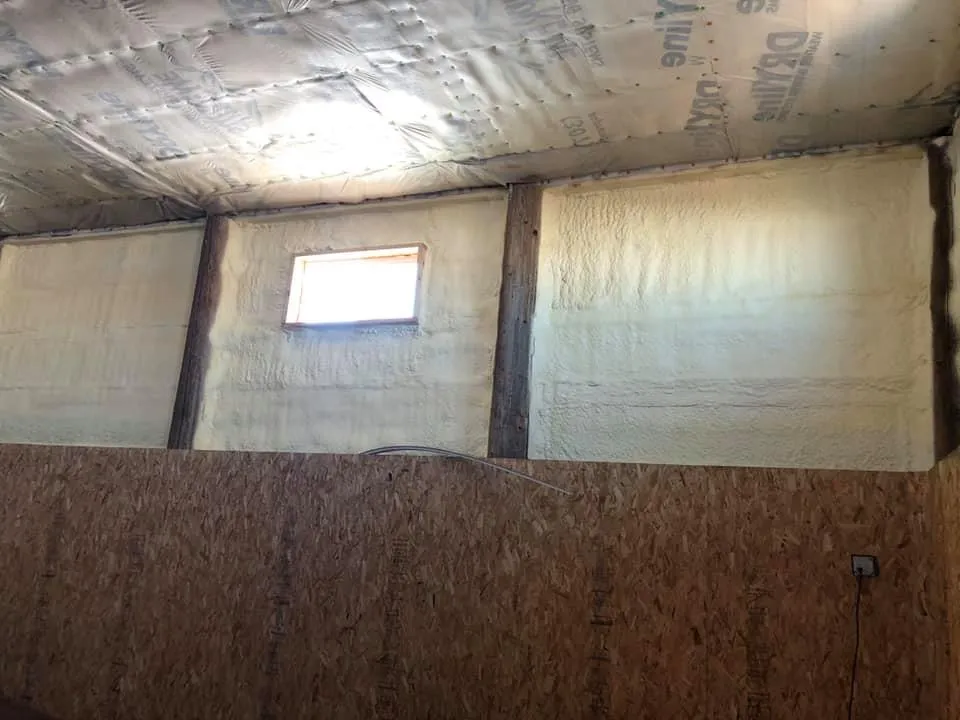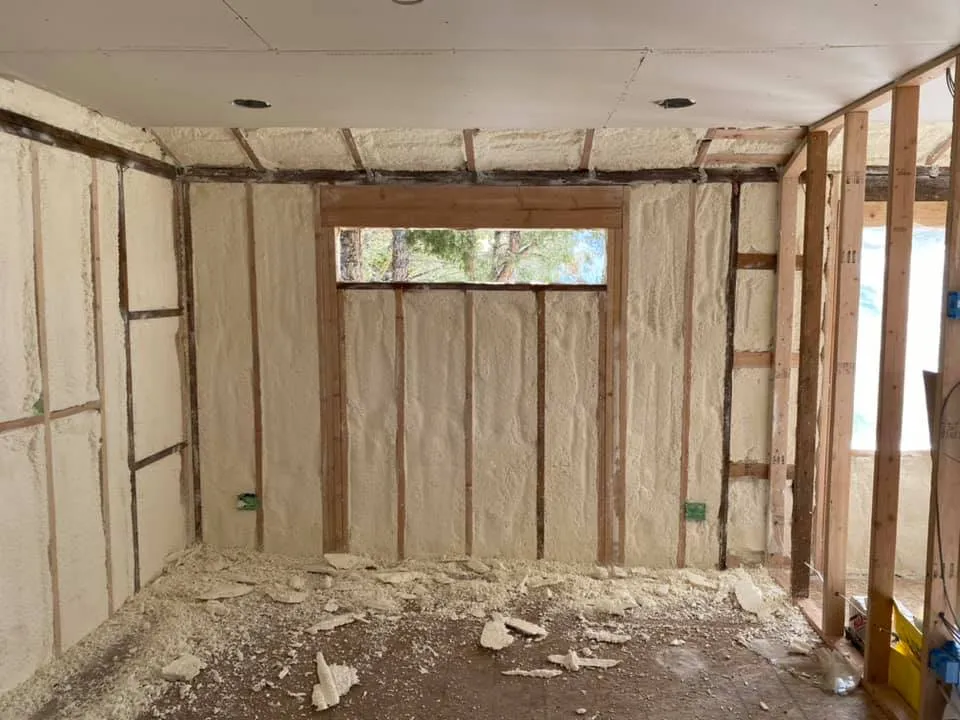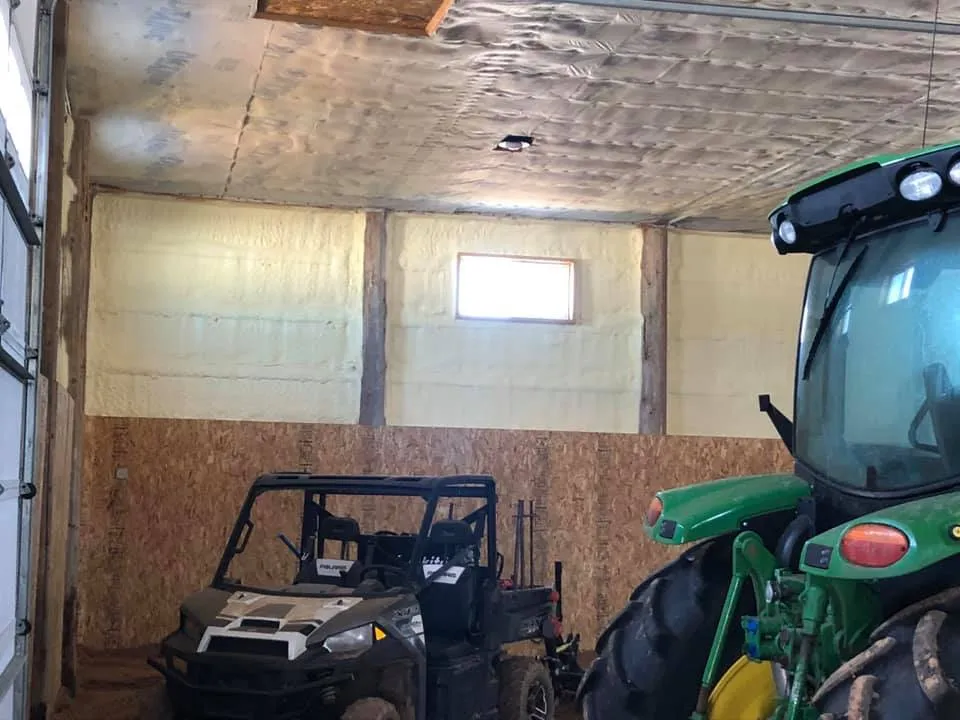
If you’re a homeowner looking to make your house more energy-efficient, comfortable, or even protected from the elements, closed-cell spray foam insulation might catch your eye. It seals air leaks, adds insulation value, and strengthens your structure all in one application. But with so much information out there, it’s easy to feel overwhelmed. What exactly is it? How does it fit into your home improvement plans? This guide breaks it all down.
Closed-cell spray foam is a type of insulation made from polyurethane that expands when sprayed and forms a hard, dense foam. Unlike traditional materials like fiberglass batts or loose-fill cellulose, it creates a continuous barrier that blocks air, moisture, and even pests. Homeowners choose it for its high R-value per inch, meaning better thermal performance in less space. In colder climates, it can cut heating bills significantly. In humid areas, its closed-cell structure resists water, preventing mold growth.
Why does this matter to you? Energy costs keep rising, and older homes often lose 20-30% of their conditioned air through gaps and cracks. According to the U.S. Department of Energy, proper insulation can reduce heating and cooling expenses by up to 25%. Closed-cell spray foam addresses these issues head-on, offering long-term savings and peace of mind. Plus, it can increase your home’s resale value by showing buyers a modern, efficient setup.
This guide draws from years of hands-on work installing and advising on insulation solutions across various homes. You’ll start with the basics: what closed-cell spray foam is and how it works. Then, move into benefits, types, and installation details. Expect sections on costs, safety, common pitfalls, and what’s next for the industry. By the end, you’ll know if it’s right for your home and how to proceed confidently.
Whether you’re remodeling your attic, insulating a new addition, or just curious about upgrades, this comprehensive resource covers everything. Let’s get into the details so you can make informed choices for your living space. First, let’s define what closed-cell spray foam insulation actually is.
Closed-cell spray foam starts as two liquid components: polyol resin and isocyanate. When mixed at the nozzle during application, they react and expand rapidly, up to 100 times their liquid volume. The result? A rigid, closed-cell structure where gas pockets are sealed off, giving it high density and strength.
This differs from open-cell spray foam, which has interconnected cells that make it softer and more breathable but less dense. Closed-cell versions typically weigh about 2 pounds per cubic foot, while open-cell is around 0.5 pounds. That density translates to superior insulation and moisture resistance.
Homeowners often encounter it in walls, roofs, and crawlspaces. It’s applied in place, filling irregular shapes and hard-to-reach areas that batt insulation can’t touch. A report from the Spray Polyurethane Foam Alliance highlights its role in modern building codes, where airtightness is key to energy efficiency.
Think about your home’s envelope: the walls, roof, and foundation that separate indoors from outdoors. Gaps here let in drafts, humidity, and noise. Closed-cell foam seals those points, creating a tighter barrier than most alternatives.
The magic happens in the chemical reaction. When the two components meet, they form a polymer matrix filled with tiny, closed bubbles of gas—usually hydrofluorocarbons or similar. These gases have low thermal conductivity, trapping heat or cold effectively.
Its R-value, a measure of insulation resistance, sits at 6 to 7 per inch. For comparison, fiberglass batts offer about 3.1 per inch. So, in a 2×4 wall, closed-cell foam can provide R-13 or more in the same space. It also acts as a vapor barrier, with a perm rating below 1, meaning water vapor struggles to pass through.
During expansion, the foam adheres tightly to surfaces, reducing thermal bridging—where heat escapes through studs or joists. This uniform coverage boosts overall performance. Data from the Oak Ridge National Laboratory shows spray foam homes use 15-20% less energy for heating compared to those with traditional insulation.
But it’s not just about heat. The rigid structure adds shear strength, helping walls resist wind loads. In hurricane-prone areas, this can make a real difference.
Expert Tip: Before installation, check your home’s ventilation. Closed-cell foam seals so well that you might need to upgrade your HVAC system to maintain air quality indoors.
One major perk is energy savings. By sealing air leaks, it keeps your HVAC system from overworking. Homeowners report bills dropping 20-40% after retrofits, depending on the home’s age and location.
Comfort comes next. No more cold spots in winter or hot rooms in summer. The foam dampens sound, too—ideal if you live near traffic or have noisy neighbors. Its moisture resistance fights condensation, a common issue in bathrooms or basements.
Structurally, it reinforces your home. In rim joists or garage walls, it adds rigidity, potentially extending your building’s life. The Insurance Institute for Business & Home Safety notes that foam-insulated homes fare better in storms due to this added strength.
Environmentally, while the foam itself uses chemicals, its efficiency reduces your carbon footprint over time. Less energy use means fewer emissions from power plants.
For market context, the global spray foam insulation market reached $8.5 billion in 2022, per a study from Grand View Research, driven by demand for green building materials.
Here’s a quick comparison table:
| Feature | Closed-Cell Spray Foam | Fiberglass Batts | Cellulose |
|---|---|---|---|
| R-Value per Inch | 6-7 | 3.1-4.3 | 3.2-3.8 |
| Moisture Resistance | Excellent | Poor | Fair |
| Air Sealing | Superior | Fair | Good |
| Cost per Sq Ft | $1-2 | $0.50-1 | $0.80-1.50 |
This table shows why closed-cell often wins for comprehensive protection.
Key Takeaways:
Most closed-cell foams fall into medium-density categories, but variations exist based on application. Roof coatings use lower-density versions for UV resistance, while wall foams prioritize density for load-bearing.
High-density foams, over 2.5 pounds per cubic foot, offer even more strength for foundation work. Low-pressure formulations allow DIY kits, though professionals handle most jobs for best results.
Each type suits different needs. For attics, a standard medium-density works well. In flood zones, opt for high-density to block water ingress.
Medium-density foam balances insulation and strength well, though it may not handle extreme loads as rigidly as higher options. High-density provides superior durability but at a greater expense.
Expert Tip: Match the type to your climate. In very cold areas, higher density prevents settling over time.

Professional installation starts with preparation. Crews protect floors and remove obstacles. They set up equipment: a truck-mounted rig with heated hoses for the chemicals.
Next, they spray in layers, typically 1-2 inches per pass to control expansion and avoid over-pressurizing. For walls, they drill small holes in sheathing for cavity fill. In open spaces like attics, it’s a direct spray.
Curing takes hours; full hardness in days. Technicians monitor temperature and humidity to ensure proper reaction—too cold, and it won’t expand right.
Homeowners should plan for 1-3 days of disruption, depending on scope. After, enjoy immediate benefits like stabilized temperatures.
Safety gear is crucial: respirators and suits for workers. If you’re nearby, stay out during spraying.
Common tools include plural-component proportioners for accurate mixing. For pros, this ensures consistency.
Attics top the list—spray foam here prevents heat loss through the roof. Walls follow, especially exterior ones, for year-round efficiency. Basements and crawlspaces benefit from its moisture barrier.
Rim joists, those edges under floors, often get overlooked but leak badly; foam seals them tight. Garages can become conditioned spaces with it, adding usable square footage.
In renovations, it’s great for cathedral ceilings or irregular shapes. New builds use it from the start for code compliance.
Market data: Over 60% of new U.S. homes incorporate spray foam, according to the Home Innovation Research Labs, up from 40% a decade ago.
Avoid using it in living areas without a vapor barrier check, as it can trap indoor pollutants if not ventilated properly.
On the plus side, its performance is unmatched for combined insulation, air sealing, and strength. Longevity exceeds 80 years with no settling or sagging. No dust or fibers to irritate skin.
Drawbacks include upfront cost—double or triple that of batts. It’s not DIY-friendly; mistakes lead to off-gassing or poor coverage. Some worry about chemicals, though cured foam is stable.
In hot, humid climates, its low permeability might trap moisture if not detailed right. Always pair with proper building science.
Expert Tip: Get multiple quotes and check installer certifications from the Spray Polyurethane Foam Alliance to avoid shoddy work.
To weigh options:
| Pro | Con |
|---|---|
| High efficiency | Higher initial cost |
| Moisture resistant | Requires pros |
| Structural boost | Potential for errors |
| Quiet and comfortable | Chemical concerns |
Key Takeaways:
Expect $1 to $2.50 per board foot installed. For a 1,000 sq ft home, full envelope might run $10,000-$20,000. Factors: accessibility, thickness, and location.
ROI shines in energy savings. Payback in 3-7 years, then decades of gains. Tax credits like the Inflation Reduction Act cover up to 30% for efficient upgrades, per the IRS.
Appraisal boosts: Insulated homes sell 5-10% higher, notes a National Association of Realtors survey.
Shop around, but don’t cut corners on quality.
During install, volatile organic compounds (VOCs) release, so ventilation is key. Cured foam is inert and doesn’t off-gas. The EPA rates it safe when applied correctly.
Health-wise, it improves indoor air by sealing out allergens and pollutants. Environmentally, production uses blowing agents with global warming potential, but efficiency offsets this. Newer low-GWP foams are emerging.
Fire resistance is good; it doesn’t support combustion like some materials.
Expert Tip: Insist on third-party testing for HFO-blown foams to minimize environmental footprint.
Market stat: Low-GWP products now hold 25% market share, growing fast per MarketsandMarkets.
Success shows in lower bills and even temperatures. Use blower door tests pre- and post-install to quantify airtightness.
Maintenance? Minimal. Inspect for damage from pests or impacts every few years. Clean surfaces gently.
Lifespan: 25-50+ years, outlasting many alternatives.
Track ROI with utility comparisons.
Bio-based foams reduce petroleum reliance. Smart integrations with sensors monitor performance.
3D printing applications for custom fits. Regulations push for greener blowing agents.
By 2030, market could hit $15 billion, driven by net-zero homes, says Grand View Research.
Stay updated for innovations that make it even better.

DIY kits exist for small areas, but full-home jobs need pros. The process requires precise equipment to avoid health risks and performance issues. Hiring certified installers ensures even coverage and code compliance.
It’s not fully fireproof, but it has a high ignition temperature and low flame spread. Building codes require thermal barriers like drywall over exposed foam for safety.
No, the dense structure and chemicals deter insects and rodents. It seals entry points, adding another layer of protection.
Aim for 3-5 inches in walls for R-21, but consult local codes. Thicker in attics for maximum efficiency. Pros calculate based on your climate zone.
Most don’t, if installed properly. Check with your builder or insurer. Quality work actually enhances protection.
It reduces energy use, cutting emissions, but production impacts exist. Choose products with low-GWP agents for a greener choice.
You’ve now covered the essentials: from how it works to real-world applications, costs, and beyond. Closed-cell spray foam offers powerful benefits for efficiency and durability, but success depends on proper planning and execution. Use this guide as your reference—review sections as needed when evaluating options.
Start by assessing your home’s needs: check for drafts, review energy bills, and consider your goals. Get inspections and quotes from certified pros. With the right approach, you’ll boost comfort, save money, and safeguard your investment for years.
If you’re ready to explore closed-cell spray foam for your home, High Country Solutions can help with assessments and installations tailored to your setup. Reach out via email at [email protected] or call (307) 248-9063 for a consultation. Their team brings practical experience to ensure reliable results without the guesswork.